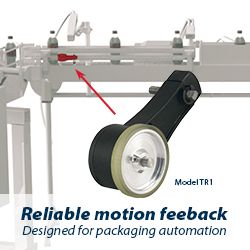Top Safety Innovations in Manufacturing
How to Avoid the Top Manufacturing Safety Hazards
Why Disaster Preparedness Is Important in the Manufacturing Industry
Intrinsic Safety: Isolated Barriers Bring out the Best in Protection
Ensuring That Paint is Safe for Your Products
Electrical Safety in the Manufacturing Environment
Technology That Can Improve Safety in Manufacturing
Designing Safe Pneumatic Circuits
Specialized Sensors Perform in Extreme Environments
Why Risk Assessment is Important in Machine Safety
Distribution Center Best Practices to Improve Safety & Efficiency
The Next Phase in Industrial Dust Explosion Protection
IT Security and Machine Safety
Protection - Arguments for Safer Working Environment
Manufacturers Achieve Safety and Employee Engagement of Spanish Speaking Workers
Records 46 to 60 of 65
First | Previous | Next | Last
Featured Product

